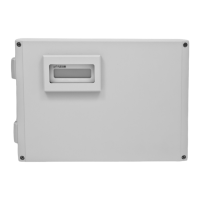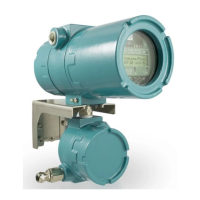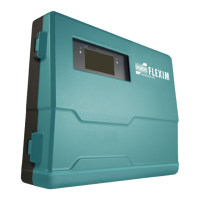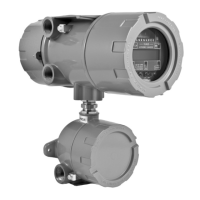20 Wall thickness measurement (optional)
20.4 Measurement FLUXUS F60*
2017-10-16, UMFLUXUSF60xV5-0EN
204
20.4.4 Errors during the measurement
If no valid wall thickness can be measured:
• remove the wall thickness probe from the pipe wall
• clean the wall thickness probe and the place where the measurement takes place
• apply a thin film of the coupling compound to the pipe wall
• press the wall thickness probe against the pipe wall in this position
• try to measure again
20.4.5 Possible reasons for incorrect measuring results
• temperature fluctuations:
The sound speed is temperature dependent.
• doubling effect:
When measuring the wall thickness using ultrasonic signals, a phenomenon called dou-
bling effect can occur if the wall thickness is smaller than the min. measuring range of
the probe. The measured value is then twice (or sometimes 3 times) as high as the ac-
tual wall thickness because of repeated reflections of the ultrasonic signal.
• the measured value is too low:
The ultrasonic signal was reflected by a defect and not by the boundary layer, resulting
in a shorter transit time and therefore a lower wall thickness.
• curved surfaces:
The probe has to be pressed centrally against the pipe or cylindrical vessel. The applied
pressure has to be constant. The acoustic partition boundary of the wall thickness
probe has to be perpendicular to the longitudinal axis of the pipe, see Fig. 20.2.
• surface conditions:
Regular unevenness (e.g., small grooves) on the surface of the pipe can result in wrong
measured values. Normally, this problem can be avoided by turning the wall thickness
probe in such way that the acoustic partition boundary of the wall thickness probe is
perpendicular to the orientation of the grooves, see Fig. 20.2.
When measuring on a rough surface, applying too much of the coupling compound can
result in wrong measured values. A measurement on a very rough surface might be im-
possible (the message NO COUPLING will be displayed). In this case, the surface has to
be smoothed.
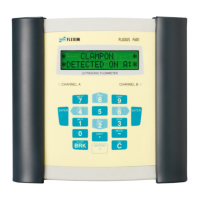
